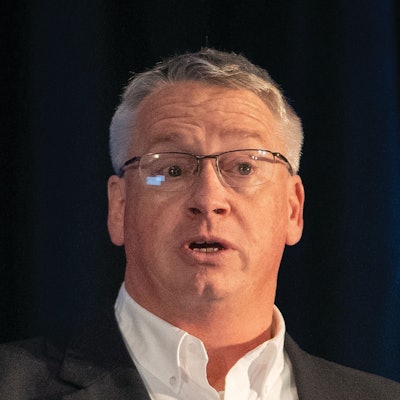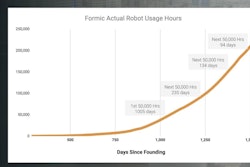There was a time when our brand decided to try moving faster in our innovation. We had used a formal process up to that point, but it seemed the process often helped us decide why not to do things far more than it helped us actually try new things!
So, our CEO had us staffed and focused on getting ideas to a “good enough” state to at least conduct an in-store limited trial or mini-launch—to see if we could find success with less wasted effort. This led to some pretty awesome days of working nimbly and included things like sitting in a room with the whole team on a Friday afternoon, with folks rearranging travel for the next week because of things learned late in the current week.
It was in this environment that we developed some refrigerated products for trial—the first time in our company’s history. One group of products was being manufactured by a co-manufacturer (co-man) in the Southern California area—L.A., to be exact. We were finally done with development and starting production to support test markets in two locations in the Midwest and Mid-South. We were in L.A. for the production startup, and as we completed production on the first day, someone came into the room where our team was situated and asked what should have been an easy question:
“Where do you want the product shipped?”
“I’m sorry, what did you just ask me?”
You guessed it. That was the first time the idea of needing a cold storage facility had even crossed my mind. Well, it didn’t just cross my mind—it was forced right to the front and center!
Now, that’s just one of several stories I could tell you. Most of them have pretty good outcomes, too—primarily because I’ve worked with many, many incredible folks throughout my career.
Even so, there have been a lot of situations, CM/CP providers, and projects that have combined to create interesting—and sometimes even funny—stories. Those situations have also led to a lot of valuable lessons. Here are a few that go beyond just the technical aspects of an engagement.
1. Relationships can become the most important aspect of CM/CP and brand-owner partnerships. Companies building a CM/CP sourcing strategy should prioritize the relationships that seem to form early in the evaluation process. This isn’t always about people simply “getting along.” It can be about the transparency experienced, the connection observed, or even a “feeling” that is hard to describe—but that several members of your evaluation team can recognize.
2. Capability confirmations should go beyond just understanding what unit operations a provider offers. True capability includes the service provider’s ability to flex those unit operations. It should also include the provider’s ability to talk about their “sweet spots” and explain how they handle opportunities that may require a “stretch” for them.
3. Be honest about the engagement. A final key area blends the first two together. Can the teams on both sides connect well enough to be honest about what feels right and what doesn’t in the engagement being considered? Will the engagement start with “eyes wide open” and stay that way moving forward? The more innovative or technically challenging a project is expected to be, the more critical these questions become.
Here’s a somewhat typical example of what I’m talking about.
As we visited a potential supplier in the refrigerated space, my product developer, food safety person, and I were welcomed by the entire leadership team at the provider. In fact, they sat in the conference room with us the entire time we weren’t on the floor touring the facility—probably an hour and a half or more. The facility was small, with two to three small lines, only one of which was running the day of our visit. We talked about the products we wanted to make, and we were assured that the provider could do the work.
On the way back to the airport, I asked my colleagues what they thought. They said they believed the provider could meet our needs. Then I asked if they had noticed that the entire leadership team seemed to have time to sit with us that morning. I pointed out that some of them should not have had that kind of time on their hands. My colleagues didn’t think it was that big of a deal.
“Okay,” I said. “Consider this. Six to eight weeks from now, our president calls you and says he’ll be in the provider’s area sometime in the next week or so, and he’d like to visit our new co-man.”
“Oh!” they both painfully echoed, suddenly realizing they might not feel great about such a visit.
“Well,” I said, “doesn’t that tell you something?”
And just like that, we quickly agreed—our provider search was not over.
Robby Martin is principal at 3-Fold Consulting.



























